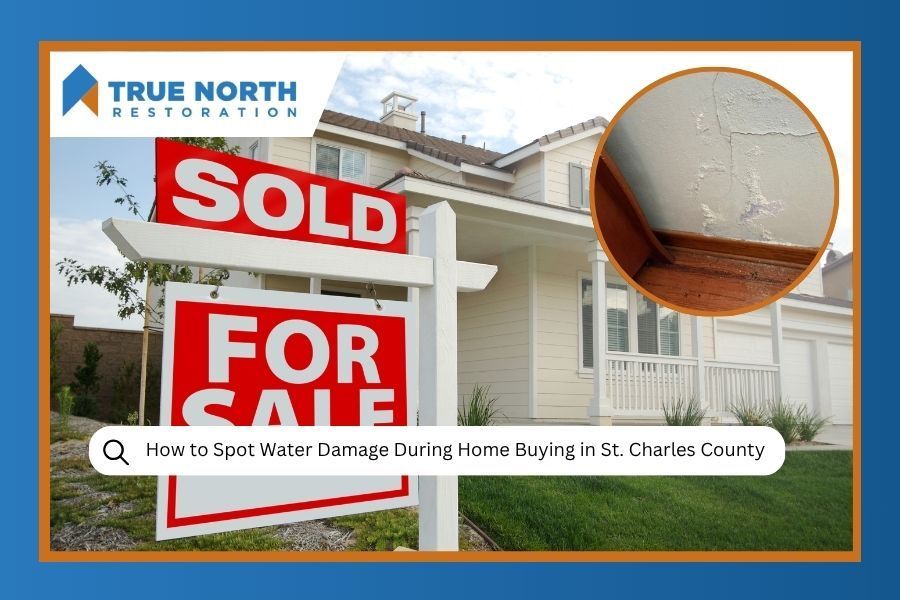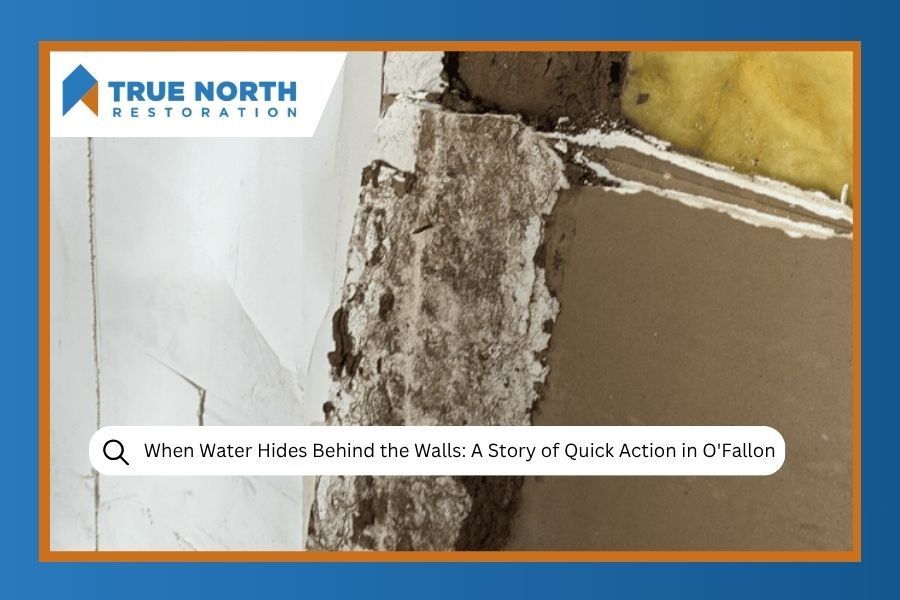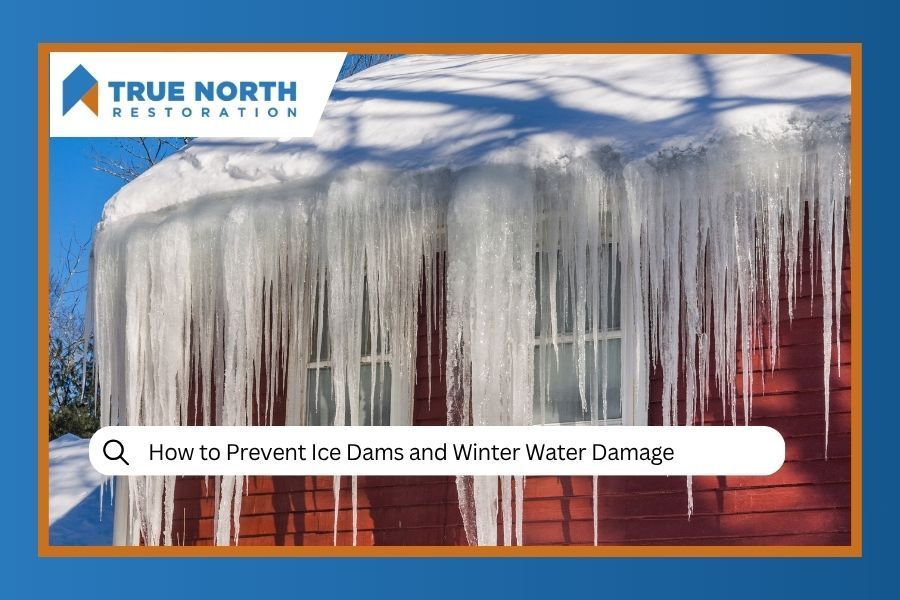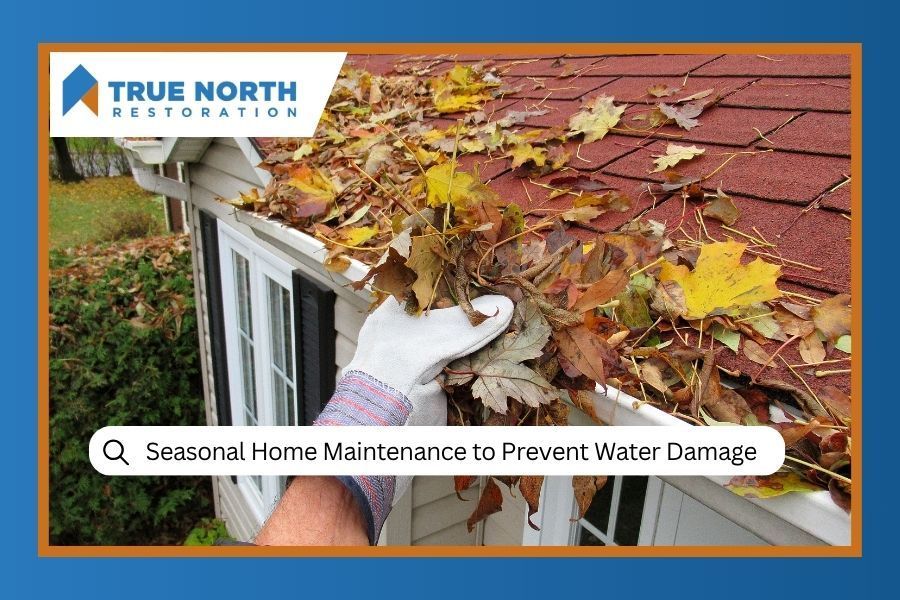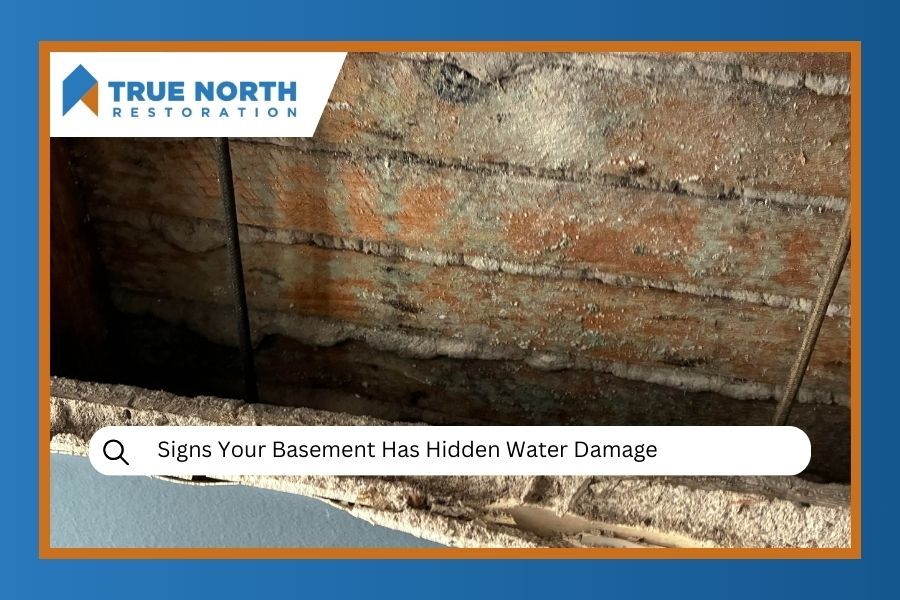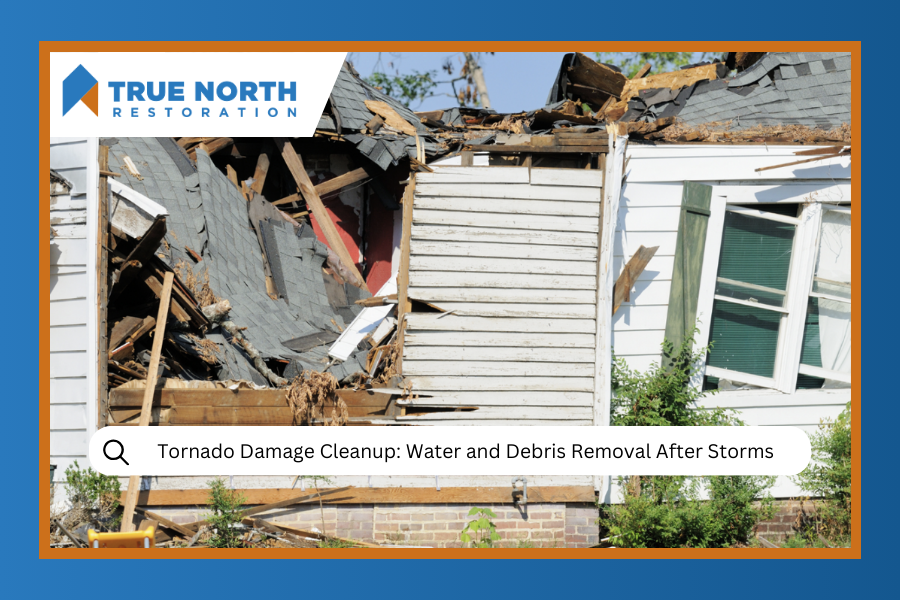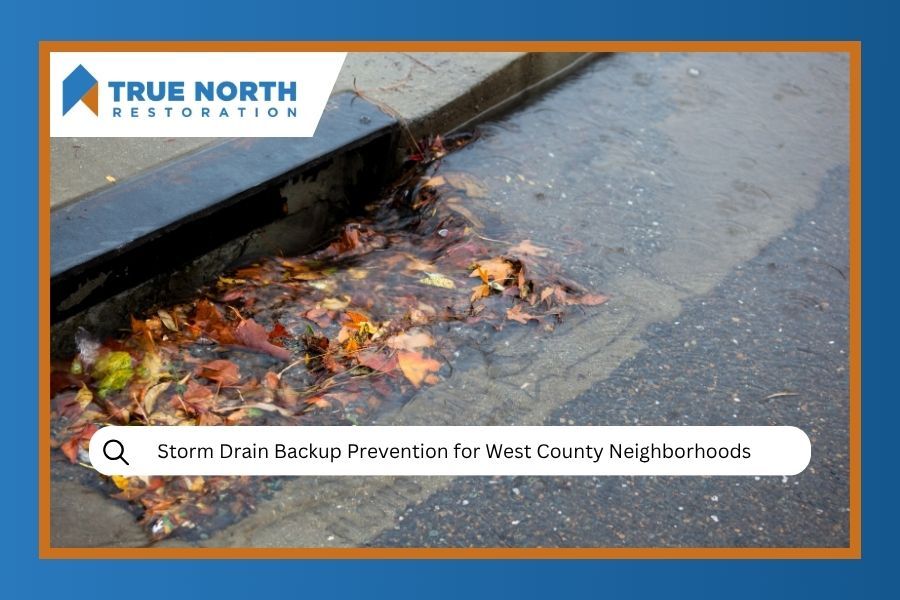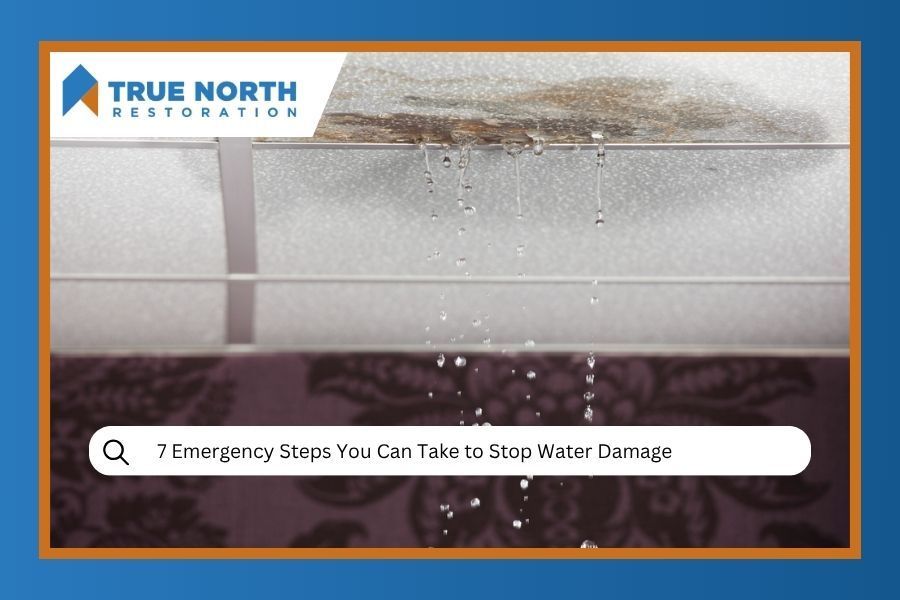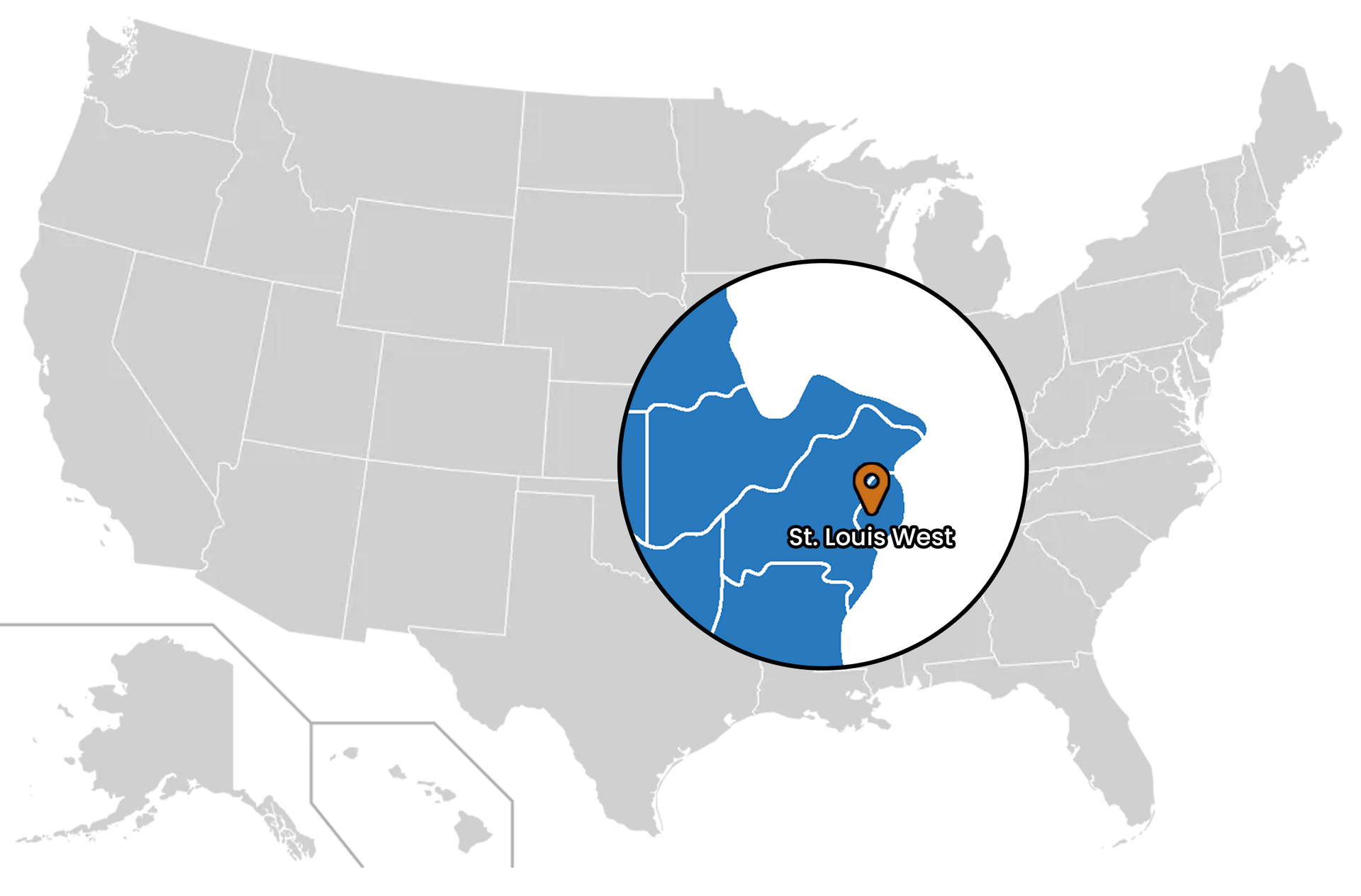Jump To:
- Why Water Damage Matters More Than You Think
- Your Water Damage Inspection Checklist
- Start with the Basement and Foundation
- Check Every Window and Door
- Examine the Bathroom and Kitchen Areas
- Don't Forget to Look Up: Ceiling and Attic Inspection
- What to Do When Your World Heads South
- Seasonal Considerations for St. Charles County
- Working with Professionals
- The Bottom Line: Protect Your Investment
- Frequently Asked Questions
Buying a home in St. Charles County and West County is exciting, but it can also be nerve-wracking, especially during those crucial final weeks before closing. You've probably already imagined where the couch will go and picked out paint colors, but have you thought about what might be hiding behind those freshly painted walls?
Water damage is one of those sneaky issues that can turn your dream home into a costly nightmare if you're not careful. The good news? We're here at True North Restoration of Greater St. Louis West to help you know what to look for. Our team has seen it all in Chesterfield and the surrounding communities, from water damage restoration emergencies to preventable issues that smart buyers catch early. Here's your guide to spotting water damage like a pro during your home inspection.
Why Water Damage Matters More Than You Think
Let's be real for a second. Water damage isn't just about a few stains on the ceiling that need fresh paint. When water gets where it shouldn't be, it creates the perfect environment for mold, weakens structural elements, and can lead to thousands of dollars in repairs down the road.
In our area, we deal with everything from heavy spring rains to those brutal winter freezes that can burst pipes. Most homes here have basements, and with St. Charles County's clay soil, foundation issues aren't uncommon. You can check St. Charles County's flood insurance rate maps to understand flood risks in specific neighborhoods. That's why knowing how to spot the warning signs before you buy can save you major headaches and money later.
Ready to Buy? Here's Your Water Damage Inspection Checklist
When you're walking through that potential dream home, keep your eyes peeled for these telltale signs. Think of yourself as a detective, it's all about noticing the details that others might miss.
Interactive Home Inspection Guide
🏠 Basement & Foundation
- White chalky residue
- Musty odors
- Wall staining
- Soft drywall spots
🪟 Windows & Doors
- Water stains on frames
- Bubbling paint
- Soft wood sills
- Fresh caulk patches
🚿 Bathrooms & Kitchen
- Under-sink damage
- Toilet base soft spots
- Missing grout
- Appliance area stains
🏠 Ceilings & Attic
- Brown water stains
- Sagging materials
- Peeling paint
- Visible mold spots
Start with the Basement and Foundation
Since most homes in our area have basements, this is where you'll want to spend some serious time during your walkthrough. Basements are like water damage headquarters, they'll tell you everything you need to know about how well the house handles moisture.
Look for these red flags:
- White, chalky residue on foundation walls (that's efflorescence, and it means water has been seeping through)
- Musty smells that hit you as soon as you walk downstairs
- Staining along the bottom of walls where they meet the floor
- Soft spots in drywall or wood trim
- Any signs that a sump pump has been working overtime
Don't just glance around, get up close to the walls and really look. Run your hand along the bottom edges of drywall. If it feels soft or spongy, that's moisture damage waiting to become a bigger problem. For comprehensive guidance on what to look for, the American Society of Home Inspectors provides detailed checklists for buyers.
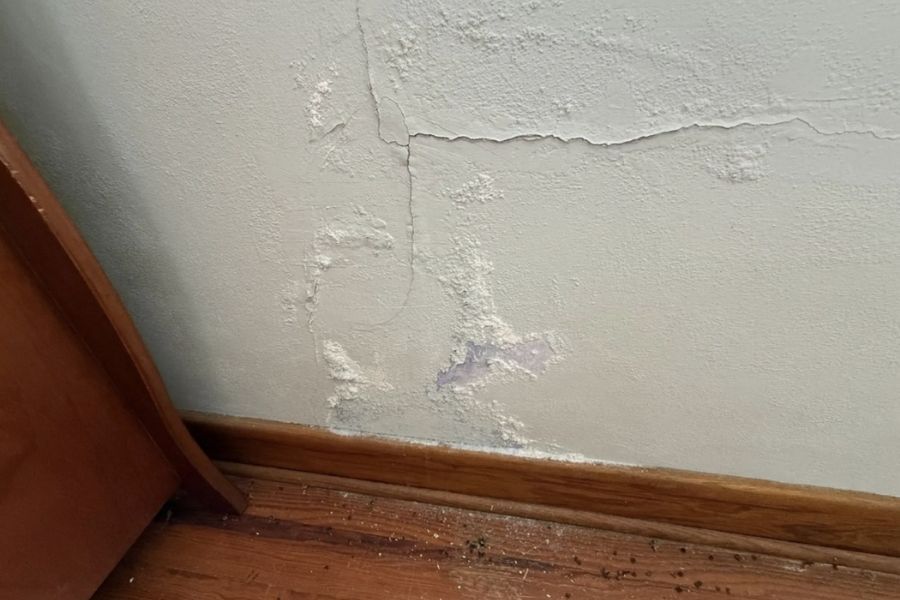
Cracked drywall and bubbling paint are clear indicators of ongoing moisture problems that home buyers should never ignore during inspections.
Check Every Window and Door Like Your Down Payment Depends on It
Windows and doors are prime suspects when it comes to water intrusion. Missouri weather can be tough on seals and caulking, and even small gaps can let in surprising amounts of water over time.
Here's what to examine:
- Look for water stains or discoloration around window frames
- Check if paint is bubbling or peeling near windows
- Feel around window sills for soft or rotting wood
- Look for signs of caulk that's been recently redone (could be covering up a problem)
- Test windows to see if they close properly, warped frames often mean moisture issues
Pro tip: If you see fresh caulk or paint around windows but the rest of the house looks lived-in, ask questions. Sometimes sellers do quick fixes to hide ongoing issues.
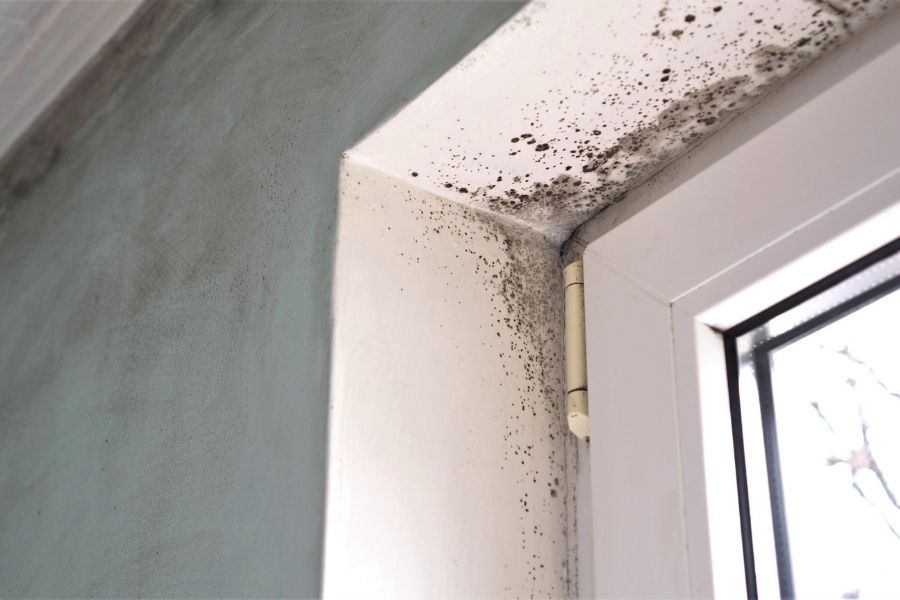
Mold growth around window frames is a telltale sign of water intrusion that requires immediate attention and professional remediation.
Examine the Bathroom and Kitchen Areas
These rooms use a lot of water, so they're naturally more prone to damage. But beyond the obvious stuff like a dripping faucet, you want to look for signs of long-term moisture problems.
Key areas to inspect:
- Look under sinks for water stains, soft flooring, or warped cabinet bottoms
- Check around the toilet base for soft spots in flooring
- Examine tile grout for missing or discolored sections
- Look at bathroom exhaust fans, do they work properly?
- Check kitchen appliance areas, especially around the dishwasher and refrigerator
Don't Forget to Look Up: Ceiling and Attic Inspection
Water travels, and it often shows up on ceilings long after the original leak started. Those brown water stains you might see could be from a roof leak, plumbing issue, or HVAC problem.
Watch for these warning signs:
- Brown, yellow, or rust-colored stains on ceilings
- Sagging or bubbling ceiling material
- Peeling paint or wallpaper
- Visible mold spots
- Signs of fresh paint that doesn't match the rest of the ceiling
If possible, take a peek in the attic during your inspection. Look for water stains on rafters, wet insulation, or any signs that water has been getting in through the roof.
Concerned About What You're Seeing?
Don't let potential water damage derail your home buying dreams. Get expert guidance from our certified restoration specialists.
Schedule Professional InspectionWhat to Do When Your World Heads South During the Buying Process
Found something suspicious during your inspection? Don't panic, but don't ignore it either. Here's how to handle potential water damage discoveries:
First, document everything. Take photos and notes about what you're seeing. Your real estate agent and inspector will need this information.
Next, get a professional opinion. If you're seeing signs of mold remediation needs or significant water damage, bring in an expert. We offer inspections and can give you a realistic picture of what you're dealing with.
Then, factor it into your negotiations. Depending on what you find, you might ask the seller to fix the issues, reduce the purchase price, or provide credits at closing for repairs.
Seasonal Considerations for St. Charles County Home Buyers
The time of year you're house hunting can affect what water damage signs you'll see. Here in St. Charles County and West County, each season brings its own challenges.
Spring and Summer: This is prime time for spotting issues related to heavy rains and storms. Look for fresh water stains, soggy basements, and signs of recent flooding.
Fall: A great time to check gutters and exterior drainage before winter sets in. Look for clogs, damage from summer storms, and areas where water might pool.
Winter: Frozen pipes are a real concern here. Look for signs of recent pipe repairs, and pay attention to areas where pipes might be vulnerable to freezing.
| Water Damage Sign | Severity Level | Immediate Action Needed | Negotiation Impact |
|---|---|---|---|
| Fresh water stains on ceiling | High | Yes - Professional inspection | Major price reduction or repair requirement |
| Musty basement odor | High | Yes - Mold assessment | Potential deal breaker without remediation |
| Soft spots around windows | Medium | Yes - Structural check | Moderate repair credits |
| Minor caulk gaps | Low | Monitor during final walkthrough | Minor repair request |
| Efflorescence on foundation | Medium | Yes - Foundation assessment | Waterproofing requirements |
| Visible mold growth | High | Yes - Professional remediation | Major negotiation leverage |
Working with Professionals: When to Call in the Experts
Sometimes you need more than just a keen eye to spot potential problems. If you're seeing multiple red flags or just want peace of mind, consider bringing in specialists like our team at True North Restoration of Greater St. Louis West.
We can provide detailed moisture assessments, check for hidden mold, and give you a realistic picture of any remediation needs. It's better to spend a few hundred dollars on a thorough inspection than to get surprised with thousands in repairs after closing.
The Bottom Line: Protect Your Investment
Buying a home is probably the biggest financial decision you'll make, so it makes sense to be thorough. Water damage issues don't get better on their own, they just get more expensive to fix.
The good news is that many water damage problems are totally manageable if you catch them early and address them properly. And if you do find issues in your potential new home, you're not alone. Our certified team has helped countless homeowners in Chesterfield and the surrounding areas deal with everything from minor leaks to major water damage restoration.
Remember, you have options. Whether it's negotiating with the seller, planning for future repairs, or just walking away to find a different house, knowledge gives you power in the home buying process.
Frequently Asked Questions
Q: How long does it take for water damage to cause serious problems?
A: It depends on the extent of the moisture and environmental conditions, but mold can start growing in as little as 24-48 hours. Structural damage from water can develop over weeks or months, which is why catching it early during your home inspection is so important.
Q: Are water damage inspections covered by standard home inspections?
A: Basic home inspections will note obvious water damage, but they don't typically include detailed moisture testing or hidden damage assessment. If you suspect issues, consider hiring a specialist for more thorough evaluation.
Q: What should I do if I find water damage after I've already closed on the house?
A: First, don't wait, address it immediately to prevent further damage. Contact a professional restoration company like True North Restoration for assessment and remediation. Depending on when the damage occurred and your situation, you might have options for insurance claims or legal recourse.
Q: Can I negotiate the price if I find water damage during the inspection period?
A: Absolutely. Water damage discoveries during the inspection period are valid reasons to negotiate. You can request repairs, price reductions, or credits for future remediation work. Your real estate agent can help you navigate these negotiations effectively.
Having concerns about potential water damage in a home you're considering? Don't let uncertainty derail your home buying journey. Contact True North Restoration of Greater St. Louis West at (314) 557-3990 or visit our contact page for professional inspection and peace of mind. When your world heads south, go True North.
Related Articles:



